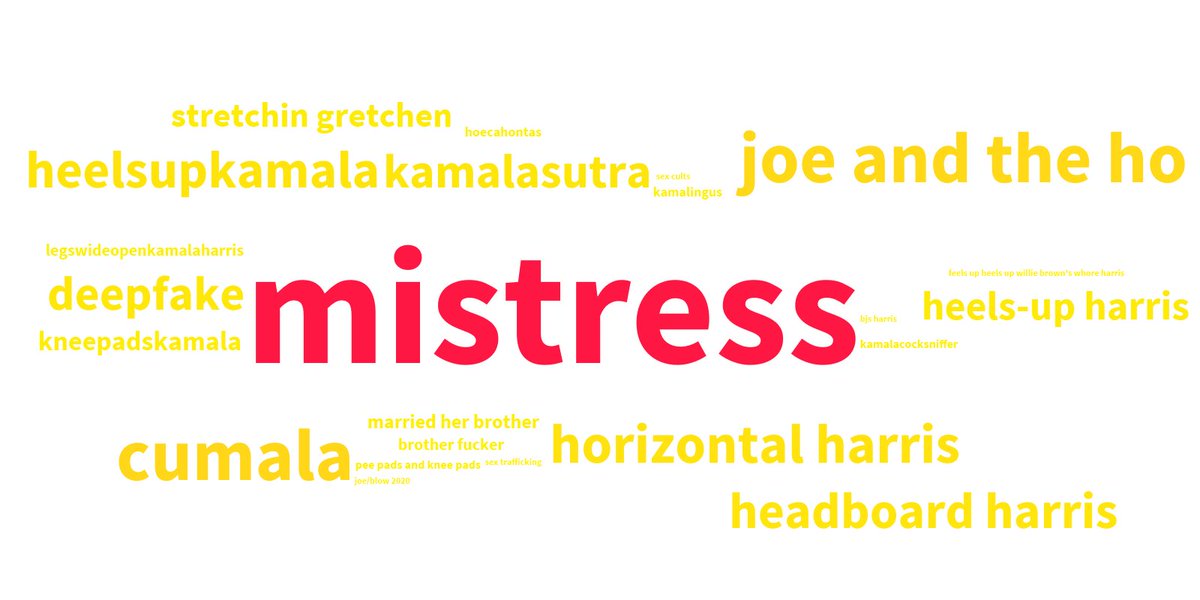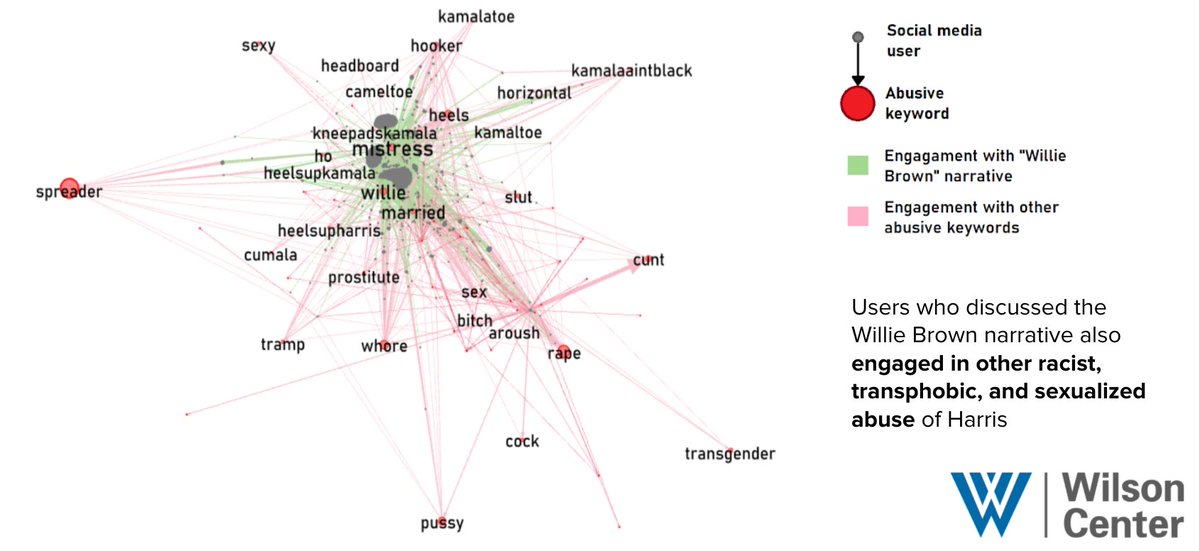Today we release “Malign Creativity: How Gender, Sex, and Lies are Weaponized Against Women Online.”
Yes, we're breaking glass ceilings, but our study shows how far we have to go before women have a truly equal voice, online or off.
https://www.wilsoncenter.org/publication/malign-creativity-how-gender-sex-and-lies-are-weaponized-against-women-online
Top lines follow:
Yes, we're breaking glass ceilings, but our study shows how far we have to go before women have a truly equal voice, online or off.
https://www.wilsoncenter.org/publication/malign-creativity-how-gender-sex-and-lies-are-weaponized-against-women-online
Top lines follow:
Gendered abuse and disinformation are terrifyingly widespread. Of our 13 subjects, 12 faced gendered abuse, and 9 faced gendered disinfo. The overwhelming majority of abuse was posted on Twitter, and targeted @KamalaHarris (78% of our data!).
Here are the most prevalent keywords supporting gendered disinformation targeting the subjects in our study, including @KamalaHarris, @IlhanMN, @GovWhitmer, and @AOC. Women were targeted with abuse across party lines.
Common disinfo narratives were racist, transphobic, or sexual. Women of color faced compounded abuse. Here you can see how users who pushed sexual narratives about @KamalaHarris also posted other abusive content. (Network by @APavliuc of @oiioxford)
The biggest challenge in identifying this content both for our team and for platforms is what we’ve dubbed “malign creativity” -- the coded language, memes, and context-based content which allow harmful posts to avoid detection.
Other challenges:
Platforms lack a coherent definition of “targeted harassment;” as a result, a lot of the abuse women face doesn’t violate terms of service and thus requires no action on the platforms’ part.
Platforms lack a coherent definition of “targeted harassment;” as a result, a lot of the abuse women face doesn’t violate terms of service and thus requires no action on the platforms’ part.
Platforms also need more intersectional expertise in content moderation, as abuse toward women, POC, and other marginalized communities too often goes undetected and unaddressed.
Unfortunately, targets bear the onus of detection and reporting. Managing an onslaught of abuse on social media requires time to block, report, and mute abusers. These burdens are discounted and affect their daily lives offline.
If this hasn’t convinced you we need a change, gendered abuse and disinfo is a national security issue. We spoke with @LetaHong, @nicoleperlroth, and @YeganehSalehi, who were targeted by Chinese, Russian, and Iranian state media with gendered disinfo and smear campaigns.
We propose several pages of solutions in the report. Most important: introducing incident reports, allowing targets of abuse to group many pieces of content/campaigns together and giving moderators more context than a single tweet/post, reducing the efficacy of malign creativity.
We also encourage lawmakers to lead by example and end the gendered rhetoric we see some politicians using in Congress and on campaigns. We also hope VAWA will be reauthorized in the new Congress and include provisions to mitigate online abuse.
Finally, too many employers, from newsrooms to universities to think tanks, do not provide enough support for women who might be exposed to abuse as a result of their work-related public engagement. It’s a critical reality of the digital age that has gone largely unacknowledged.
This research was born out of reporting I did for @CodaStory back in 2017. You can read that article here: https://www.codastory.com/disinformation/how-disinformation-became-a-new-threat-to-women/
We looked to @Sobieraj’s Credible Threat (which you should all read) and work by @NDIWomen as well as many other trailblazing women scholars as we conducted this research. Check out our citations and support their work!
Huge thanks to @MoonshotCVE for being our partner in this work, and our brilliant research team:
@JillianMoria, @APavliuc, Celia Davies, @NatSecMicah, @shannonrpierson, @zkaufmann3.
@JillianMoria, @APavliuc, Celia Davies, @NatSecMicah, @shannonrpierson, @zkaufmann3.
PS you better bet I made a TikTok about this 


 Read on Twitter
Read on Twitter



